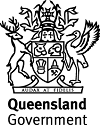Published Friday, 18 July, 2008 at 09:27 AM

Deputy Premier and Minister for Infrastructure and Planning
The Honourable Paul Lucas
ROOM FOR GROWTH ON THE GOLD COAST
A State Government stock-take shows the Gold Coast has room for up to 130,000 new residents on land the Council has already zoned for residential development.
Deputy Premier and Minister for Infrastructure and Planning Paul Lucas said this land alone is enough to cope with expected population growth until at least 2016, without counting other significant development supplies on the Gold Coast.
“At a time when fears of land shortages and the cost of housing are affecting so many South East Queenslanders, this shows there are still many areas of the Gold Coast just waiting to become someone’s home,” said Mr Lucas.
“What this says to developers and the real estate market is the full house sign is not up for the Gold Coast, there is sufficient land here and in surrounding areas to cope with population growth for years to come.
“This just underlines the importance of the Bligh Government’s focus on tackling housing affordability by cutting red tape and making it easier to bring land to market sooner.
“While the State Government is limited in its ability to influence housing prices, it will do everything possible to tackle the issue of affordability.”
The study shows there are 4,874 hectares ready for lot approval or earmarked for residential development.
Based on current average household sizes for detached and attached dwellings this will be enough land for up to 55,000 dwellings to accommodate 130,700 people.
This is more than a quarter of the Gold Coast’s current population of around 485,000 people.
“Of course, there is significantly more land available on the Gold Coast than shown just in this study,” said Mr Lucas.
“It does not include 5 Greenfield sites fast-tracked for development by the Bligh Government last month as part of the Housing Affordability Strategy.
“This study also doesn’t count any higher density redevelopment of existing sites, which is a real focus for developers across South East Queensland.
“Unlocking the full potential of the land we’ve already used will minimise the need for new infrastructure that comes with ongoing urban sprawl.
“The Bligh Government is committed to securing the Gold Coast’s future and it will benefit from projects worth more than $12.4 billion in the South East Queensland Infrastructure Plan.”
Infrastructure highlights include:
- Construction has started on the $40 million Gold Coast Convention and Exhibition Centre extension.
- More than $1.6 billion has been identified for the Gold Coast Rapid Transit project.
- Hope Island Road: additional lanes from Pacific Motorway to Columbus Drive is under construction.
- The Tugun Bypass is complete – six months ahead of schedule.
- The $276 million rail program on the Gold Coast line delivering additional rail tracks (Ormeau to Coomera, Salisbury to Kuraby) is almost complete.
- The Gold Coast Football Stadium at Robina (Skilled Park) is complete.
“We will, of course, also be looking at residential housing needs in the wider region as part of the South East Queensland Regional Plan review, which will be finalised next year,” said Mr Lucas.
Since the launch of the Housing Affordability Strategy a year ago the State Government has delivered:
- An Urban Land Development Authority,
- Simple and transparent infrastructure charging
- Improved planning and development, and
- Bring forward review of regional plan.
This year’s State Budget included significant changes to stamp duty, which will make buying a home in Queensland cheaper – especially for first homeowners.
The study reveals Pimpana (613 hectares), Coomera (593 hectares) and Hope Island (139 hectares) are expected to account for 6,765, 15519 and 5956 urban dwellings respectively.
For more information about the Gold Coast City broadhectare study visit www.dip.qld.gov.au
Media contacts: Matthew Klar 0437 435 223 and Robert Hoge 0419 757 868

